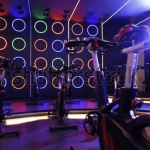Category: Uncategorized
-
From The Archive: Teamwork

This is from the PezCyclingNews Toolbox archive circa 2016, but it continues to stay relevant year over year – and serves as a springboard to deeper thinking about the role of a rider within a team plan. I’ll tackle that more in a future post. For now read on and I hope you enjoy… Last…
-
On belt buckles and archives

When I was in ninth grade I lived in a little tiny town in Southern Colorado. La Veta was all of 600 people, zero stoplights and only a couple of paved streets. It sits at the base of the Wahatoya, two 13,000 foot peaks just south of town. We played 8-man football against teams like…
-
November First

I always love November 1st! Mostly because it is the month of my birthday, but also because it represents the start of the “real” cyclocross season. September seems far too early to do ‘cross and October is more of a transition month, meteorologically speaking, but November…now that’s the start of some ‘cross racing weather! It…




